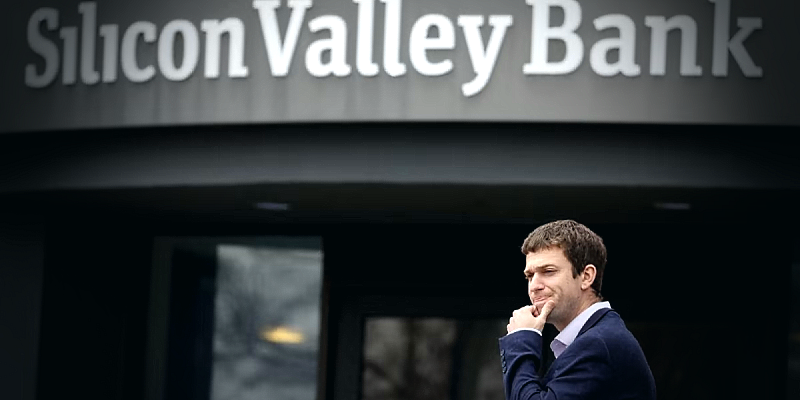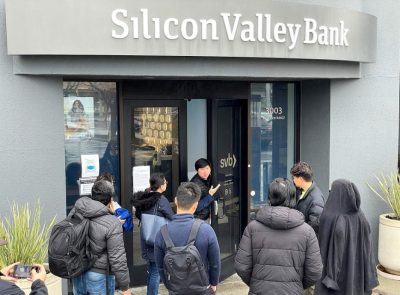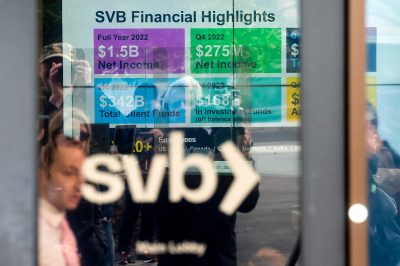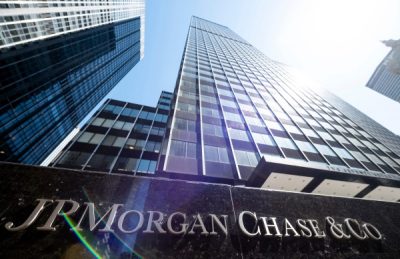The SVB meltdown could potentially snowball into a global disaster.
The collapse of Silicon Valley Bank, ranked 16th in the US, and Signature Bank, has indirectly impacted global stock and currency markets.
Some believe the event is not going to result in a systemic spread and recreate of the 2008 global financial crisis.
When Lehman Brothers announced its bankruptcy protection back then, its debt stood at a high of US$613 billion, prompting the US Treasury and American banks to abandon acquisition negotiations. The ensuing chain reactions later triggered a financial crisis of global proportions.
By comparison, Silicon Valley Bank’s debt is a far cry from the astronomical level of Lehman Brothers’.
When Lehman Brothers went bankrupt, the S&P 500 plummeted by a whopping 23% in the first month. The index slipped by a total of 56% from October 2007 through March 2009, while the stock markets in dozens of countries and territories such as Russia, China, Singapore, Hong Kong and Taiwan, saw a hefty decline of between 40% and 72% during the corresponding period.
In 2009, the GDP of developed countries fell by an average of 3.3%, while Malaysi’s contracted by 1.5%.
Established in 1983, Silicon Valley Bank is a major banking institution in the United States, whose major clients are venture capital companies and tech start-ups in Silicon Valley, with reasonable credit ratings before the bank’s collapse.
As of end-2022, SVB’s deposits exceeded $170 billion, thanks to a surge in deposits by Silicon Valley start-ups in the three years before 2021.
SVB’s lending rate was below the increase in deposits, and sure enough the bank was unable to realize the desired ROI. Consequently, the management mobilized the excess deposits to acquire over $80 billion in mortgage-backed securities (MBS), although their weighted average return was only 1.56% per annum.
If the Fed’s benchmark rate had remained at 0.25%-0.5%, an annual 1.56% return would still have been reasonable. Unfortunately, the Fed has raised the rate to 4.75% ultimately to tame the inflation triggered by the war between Russia and Ukraine.
In view of this, long-term holders of MBS have to face at least a 3% loss, and this will deal a major blow on the financial industry.

The Fed’s drastic policy has sent the cost of borrowing skyrocketing, and many of SVB’s corporate customers were badly hit.
In the last few months alone, Amazon, Google, Meta, and Microsoft have collectively laid off 51,000 workers, showing that venture capital and start-up companies have been struggling under the weight of mortgage burden.
SVB’s clients began to face severe funding crunch, and were forced to hastily withdraw from their deposits with SVB, which had huge amounts of unrealized bonds.
To cope with the dilemma, SVB announced on March 9 that it had sold about $21 billion of bonds from its investment portfolio, but this would result in a post-tax loss of $1.8 billion in the first quarter. What surprised the market even more was that the bank also sold $1.25 billion of ordinary stocks and $500 million of convertible preferred stock securities.
SVB’s actions sparked an immediate panic. As soon as the news was announced, several venture capital companies, including Founders Fund, Coatue Management and Union Square Ventures advised their portfolio companies to withdraw their investments from the bank, leading to a run on the bank of $42 billion and sending its share price down by 60%. This in turn sent other US bank counters down, along with major equity indices and global stock markets.
March 9, the California Department of Financial Protection and Innovation shut down SVB for insufficient liquidity and debt exceeding assets, forcing the Federal Deposit Insurance Corporation (FDIC) to take over the bank.
March 12, the Biden administration announced that all SVB depositors could withdraw their full deposits on the following morning. US Treasury Secretary Janet Yellen said in an interview that the US government would do its utmost to control the situation in order to prevent the crisis from spreading to other banks.
There are currently more than 5,100 banks in the United States, not all in sound condition. When the 16th ranked bank fell all of a sudden, no one knew how many potential “land mines” were still lying in the market. Confidence crisis and distrust of the government is inevitable.
Depositors lacking confidence are expected to withdraw from their bank deposits. It is therefore not an overstatement that banks suffering from insufficient liquidity and exceedingly high debt ratio in relation to their assets will trigger the new wave of bank failures.
Although US the regulators have dealt with the SVB fall with much urgency, investors are still fearful of a domino effect. Consequently, Asian stocks opened 2% lower on Tuesday morning, and it appears that the crisis has just begun to propagate.
We believe the SVB crisis is just the tip of the iceberg. The main culprit of the dilemma of US banks is none other than the Federal Reserve, which has been raising interest rates from 0.25% to 4.75% within months.
If a bank holds US bonds bearing only 1.5% interest and fails to sell to stop loss, it will soon follow in the footsteps of SVB. Many in the industry are now looking at First Republic Bank and Western Alliance Bank whose stocks have fallen by 60% to 70%.
As a matter of fact, the US financial industry is not the only crisis-battered sector. The country’s public debt has climbed to $31.4 trillion (about 1.35 times its GDP), of which 25% is held by foreign countries.
Last year, major foreign holders of US Treasury bonds, including Japan and China, sold large amounts of US bonds, with China reducing its holdings by 20% ($201.8 billion) and Japan by 19% ($222.7 billion), while Taiwan and Hong Kong reduced theirs by 10% and 14% respectively.
The liquidity of US Treasury bonds has reached a historical low. If interest rates continue to rise, the debt problem will only worsen, and will potentially set off a new global financial crisis.
ADVERTISEMENT
ADVERTISEMENT








































